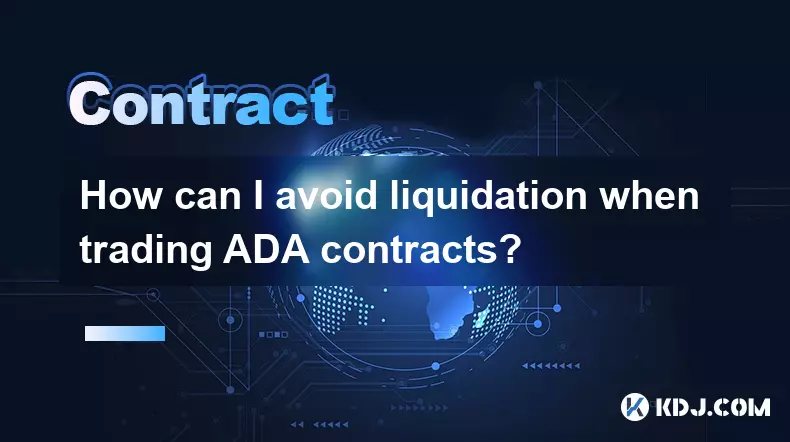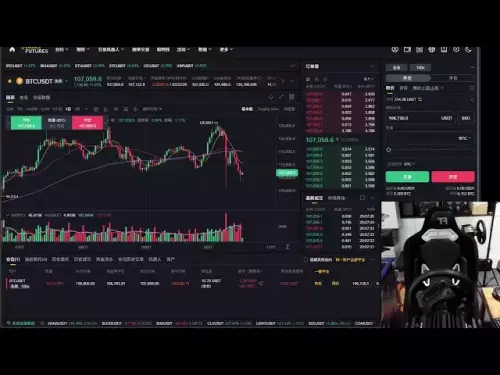-
 bitcoin
bitcoin $106975.071866 USD
-0.29% -
 ethereum
ethereum $3871.670850 USD
-0.07% -
 tether
tether $1.000261 USD
-0.01% -
 bnb
bnb $1084.417621 USD
-0.50% -
 xrp
xrp $2.348167 USD
0.82% -
 solana
solana $185.621736 USD
0.45% -
 usd-coin
usd-coin $0.999833 USD
-0.04% -
 tron
tron $0.313423 USD
0.81% -
 dogecoin
dogecoin $0.188856 USD
0.54% -
 cardano
cardano $0.630416 USD
-0.49% -
 hyperliquid
hyperliquid $36.506353 USD
2.24% -
 ethena-usde
ethena-usde $0.999584 USD
-0.01% -
 chainlink
chainlink $16.750026 USD
-0.77% -
 stellar
stellar $0.313373 USD
0.37% -
 bitcoin-cash
bitcoin-cash $465.978560 USD
-1.57%
How to short Bitcoin using contracts?
"Shorting Bitcoin via contracts lets traders profit from price drops by selling futures or perpetual contracts without owning the asset."
Jul 16, 2025 at 02:43 am

Understanding Bitcoin Shorting Through Contracts
Shorting Bitcoin using contracts is a popular method among traders who anticipate a decline in the price of Bitcoin. This strategy involves taking a position that profits when the value of Bitcoin drops. To engage in this, one must understand how futures contracts or perpetual contracts work on cryptocurrency exchanges.
Contracts allow traders to bet on the future price of an asset without actually owning it. In the case of shorting Bitcoin, a trader sells a contract at a higher price, expecting to buy it back later at a lower price, thereby making a profit from the difference.
Before diving into actual trades, it’s essential to familiarize yourself with margin trading, leverage, and liquidation levels, as these factors significantly impact the risk and potential returns of your short positions.
Selecting the Right Exchange Platform
To short Bitcoin via contracts, you must choose an exchange that offers Bitcoin futures or perpetual contracts. Some of the most widely used platforms include Binance, Bybit, OKX, and Bitmex. Each platform has its own set of features, fees, and leverage options.
Ensure the exchange supports USDⓈ-M (USDT Margined) or COIN-M margined contracts, depending on whether you want to trade with stablecoins or Bitcoin itself. It's also crucial to check the liquidity of the market you're entering, as high liquidity ensures smoother entry and exit points.
Verify account verification status and complete KYC if required. Deposit funds into your futures wallet within the exchange interface. Before proceeding, take time to explore the contract specifications, including funding rates, mark price, and position limits.
Setting Up Your Trading Account for Contract Trading
Once your funds are deposited, navigate to the futures or derivatives section of the exchange. Here, you’ll need to transfer your assets from the spot wallet to the futures wallet. This step is necessary because margin and contract trading occur in a separate environment from regular spot trading.
Select the appropriate contract pair, such as BTC/USDT or BTC/USD perpetual. Choose between isolated margin and cross margin modes. Isolated margin allocates a specific amount of margin to a single position, limiting potential losses to that amount. Cross margin uses the entire balance in your futures wallet to support all open positions, reducing the risk of liquidation.
Adjust your leverage settings according to your risk tolerance. Most exchanges allow leverage ranging from 1x to 125x. Higher leverage increases both profit potential and the risk of liquidation, so use it cautiously.
Opening a Short Position on Bitcoin Contracts
With everything set up, you can now proceed to open a short position. On the contract trading interface, locate the order type selection, which usually includes limit orders, market orders, and stop-limit orders.
If you believe Bitcoin will drop immediately, place a market sell order at the current price. For more control over entry price, use a limit sell order by specifying the desired price level.
After placing the order, monitor your open position in the positions tab. You'll see metrics like entry price, liquidation price, unrealized profit or loss, and funding fee countdown.
Keep in mind that perpetual contracts require periodic funding payments, which are exchanged between long and short holders based on the funding rate. If you hold a short position during a positive funding rate period, you’ll pay funding; during a negative rate, you receive it.
Managing and Closing Your Short Trade
Proper risk management is critical when shorting Bitcoin through contracts. Set take-profit and stop-loss levels to automate exits and protect capital. These can be configured when placing the initial order or after the position is active.
As Bitcoin’s price fluctuates, continuously assess your margin ratio and position health. If the price moves against you, consider adding more margin or reducing your position size to avoid liquidation.
When you decide to close your short trade, navigate to the positions tab and click “Close Position” or manually place a buy order equivalent to your sell position. The system will calculate your realized PnL (Profit and Loss) once the position is closed.
Review your trade history and funding fee records to understand the full cost of holding the position. Always analyze what went right or wrong to improve future trades.
Frequently Asked Questions
What is the difference between futures and perpetual contracts?Futures contracts have a defined expiration date, after which they settle. Perpetual contracts do not expire and are designed to mirror the spot price through funding mechanisms.
Can I short Bitcoin without leverage?Yes, you can short Bitcoin using 1x leverage, which means no borrowed funds are involved. However, this approach typically requires a larger capital base and results in smaller profit margins.
Is shorting Bitcoin risky?Shorting carries significant risk due to the volatile nature of cryptocurrencies. If the price rises sharply, your losses can exceed your initial investment, especially with high leverage.
How are funding fees calculated in perpetual contracts?Funding fees are generally calculated based on the difference between the perpetual contract price and the spot index price. They are charged at regular intervals, often every 8 hours, and vary across exchanges.
Disclaimer:info@kdj.com
The information provided is not trading advice. kdj.com does not assume any responsibility for any investments made based on the information provided in this article. Cryptocurrencies are highly volatile and it is highly recommended that you invest with caution after thorough research!
If you believe that the content used on this website infringes your copyright, please contact us immediately (info@kdj.com) and we will delete it promptly.
- Dota 2 YouTube Hack: Solana Scam Exposes Esports Security Flaws
- 2025-10-19 18:25:13
- Pumpfun's PUMP Price: Comeback Reasons and What's Next!
- 2025-10-19 18:25:13
- DYDX Hits Annual Lows: Analyst Call Fails to Ignite Rally
- 2025-10-19 18:30:13
- Internet Computer's Bearish Plunge: Is a 52-Week Low the End?
- 2025-10-19 18:30:13
- ENS on the Edge: Bollinger Bands and Bearish Momentum
- 2025-10-19 18:35:12
- ONDO's Wild Ride: Bollinger Bands and Oversold Territory – What's Next?
- 2025-10-19 18:35:12
Related knowledge

What are quarterly vs. perpetual ADA contracts?
Oct 19,2025 at 08:55am
Understanding Quarterly and Perpetual ADA ContractsDerivatives trading in the cryptocurrency space has expanded rapidly, offering traders various inst...

How to find historical price data for ADA contracts?
Oct 18,2025 at 10:18pm
Understanding ADA and Its Market Data Availability1. Cardano’s native cryptocurrency, ADA, operates on a decentralized blockchain that supports smart ...

How to hedge my spot Cardano portfolio with ADA contracts?
Oct 18,2025 at 05:36am
Hedging Your ADA Spot Holdings Using Derivatives1. Identify a reliable exchange that offers ADA futures or perpetual contracts. Exchanges like Binance...

How are the trading fees for ADA contracts calculated on Binance?
Oct 19,2025 at 03:18pm
Understanding ADA Futures Fee Structure on Binance1. Trading fees for ADA perpetual contracts on Binance are determined using a tiered system based on...

How can I avoid liquidation when trading ADA contracts?
Oct 18,2025 at 01:37am
Understanding Liquidation in ADA Futures Trading1. Liquidation occurs when a trader’s margin balance falls below the maintenance threshold required to...

How do you calculate profit and loss (PnL) for ADA contracts?
Oct 19,2025 at 12:18pm
Understanding ADA Contract Mechanics1. ADA contracts operate within the Cardano blockchain ecosystem, where smart contracts govern transaction logic a...

What are quarterly vs. perpetual ADA contracts?
Oct 19,2025 at 08:55am
Understanding Quarterly and Perpetual ADA ContractsDerivatives trading in the cryptocurrency space has expanded rapidly, offering traders various inst...

How to find historical price data for ADA contracts?
Oct 18,2025 at 10:18pm
Understanding ADA and Its Market Data Availability1. Cardano’s native cryptocurrency, ADA, operates on a decentralized blockchain that supports smart ...

How to hedge my spot Cardano portfolio with ADA contracts?
Oct 18,2025 at 05:36am
Hedging Your ADA Spot Holdings Using Derivatives1. Identify a reliable exchange that offers ADA futures or perpetual contracts. Exchanges like Binance...

How are the trading fees for ADA contracts calculated on Binance?
Oct 19,2025 at 03:18pm
Understanding ADA Futures Fee Structure on Binance1. Trading fees for ADA perpetual contracts on Binance are determined using a tiered system based on...

How can I avoid liquidation when trading ADA contracts?
Oct 18,2025 at 01:37am
Understanding Liquidation in ADA Futures Trading1. Liquidation occurs when a trader’s margin balance falls below the maintenance threshold required to...

How do you calculate profit and loss (PnL) for ADA contracts?
Oct 19,2025 at 12:18pm
Understanding ADA Contract Mechanics1. ADA contracts operate within the Cardano blockchain ecosystem, where smart contracts govern transaction logic a...
See all articles





















![[4K 60fps] Astral by oc3andark (1 Coin) [4K 60fps] Astral by oc3andark (1 Coin)](/uploads/2025/10/19/cryptocurrencies-news/videos/k-fps-astral-ocandark-coin/68f438453fa33_image_500_375.webp)




















































